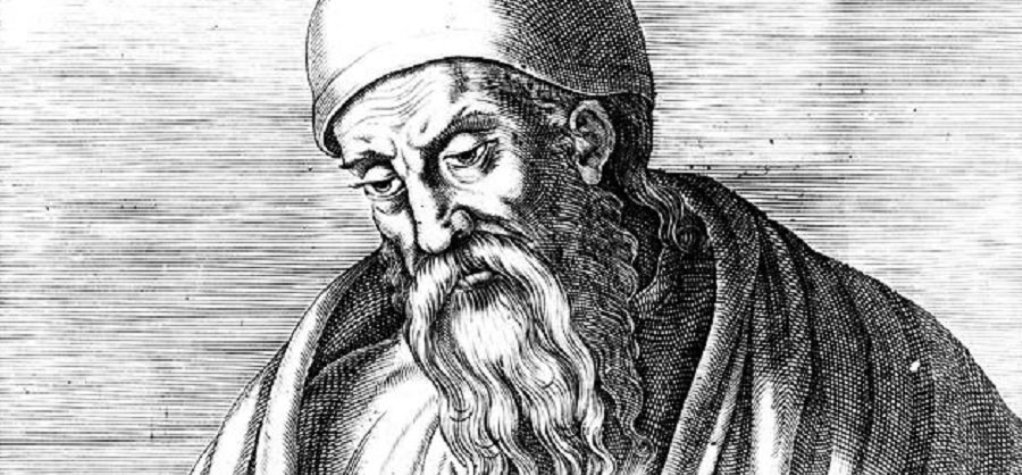Euclid, sometimes known as Euclid of Alexandria, was a Greek mathematician, often referred to as the “founder of geometry” or the “father of geometry.” He was active in Alexandria during the reign of Ptolemy I. Take a look below for 26 more fun and interesting facts about Euclid.
1. His Elements is one of the most influential works in the history of mathematics, serving as the main textbook for teaching mathematics, especially geometry, from the time of its publication until the late 19th or early 20th century.
2. In the Elements, Euclid deduced the theorems of what is now called Euclidean geometry from a small set of axioms.
3. Euclid also wrote works on perspective, conic sections, spherical geometry, number theory and rigor.
4. Euclid is the anglicized version of his Greek name, which means “renowned or glorious.”
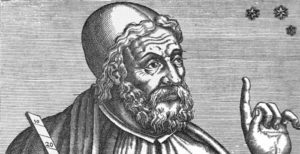
5. He is believed to have done most of his work and teachings during Ptolemy I’s reign, between 323 BC and 283 BC.
6. What we know about him today stems from a mention of Euclid by Archimedes, mentioning him as a contemporary and fellow mathematician.
7. Even though commentators have stated that Euclid’s ideas in Elements are all based on earlier, more simplified principles, until he produced the work there was nothing like it in terms of easy and organized reference.
8. He developed mathematical proofs that are highly regarded for their completeness, and are still in use more than 2,000 years later.
9. It wasn’t until the 19th century that any other type of geometry was devised, with only Euclid’s work being considered “geometry.”
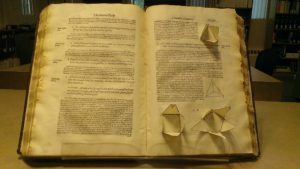
10. A detailed biography of Euclid is given by Arabian authors, mentioning, for example, a birth town of Tyre. However, the biography is generally believed to be fictitious.
11. If he came from Alexandria, he would have known the Serapeum of Alexandria, and the Library of Alexandria, and may have worked there during his time.
12. Euclid’s arrival in Alexandria came about ten years after its founding by Alexander the Great, which means that he arrived around 322 BC.
13. Proclus introduced Euclid only briefly in his Commentary on the Elements. According to Proclus, Euclid supposedly belonged to Plato’s “persuasion” and brought together the Elements, drawing on prior work of Eudoxus of Cnidus and several pupils of Plato.
14. Euclid died in 270 BC, presumably in Alexandria.
15. Because of the lack of biographical information, which is unusual for the period in which he lived, some researchers have proposed that Euclid wasn’t, in fact, a historical character and that his works were written by a team of mathematicians who took the name Euclid from the historical character Euclid of Megara.
16. There is no mention of Euclid in the earliest remaining copies of the Elements, and most of the copies say they are, “from the edition of Theon,” or the “lectures of Theon,” while the text considered to be primary, held by the Vatican, mentions no author.
17. Although best known for its geometric results, the Elements also includes number theory.
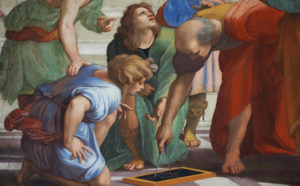
18. Euclid’s Elements considers the connection between perfect numbers and Mersenne primes, the infinitude of prime numbers, Euclid’s lemma on factorization and the Euclidean algorithm for finding the greatest common divisor of two numbers.
19. The geometrical system described in the Elements was long known simply as geometry, and was considered to be the only geometry possible.
20. Today, Euclid’s geometry is known as Euclidean geometry to distinguish it from other so-called non-Euclidean geometries that mathematicians discovered in the 19th century.
21. The Papyrus Oxyrhynchus 29 is a fragment of the second book of the Elements of Euclid, unearthed by Grenfell and Hunt in 1897 n Oxyrhynchus.
22. Euclid’s Data deals with the nature and implications of “given” information in geometrical problems.
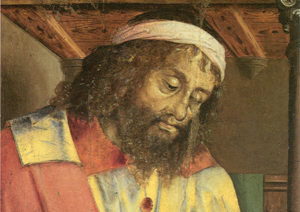
23. In his Divisions of Figures, which survived only partially in Arabic translation, deals with the division of geometrical figures into two or more equal parts or into parts in given ratios.
24. In his Catoptrics, he looks at the mathematical theory of mirrors, particularly the images formed in plane and spherical concave mirrors.
25. Euclid’s Phaenomena is a treatise on spherical astronomy. It survives in its original Greek writing and is very similar to On the Moving Sphere by Autolycus of Pitane.
26. His Optics is the earliest surviving Greek treatise on perspective. In its definitions, Euclid follows the Platonic tradition that vision is caused by discrete rays which emanate from the eye.

